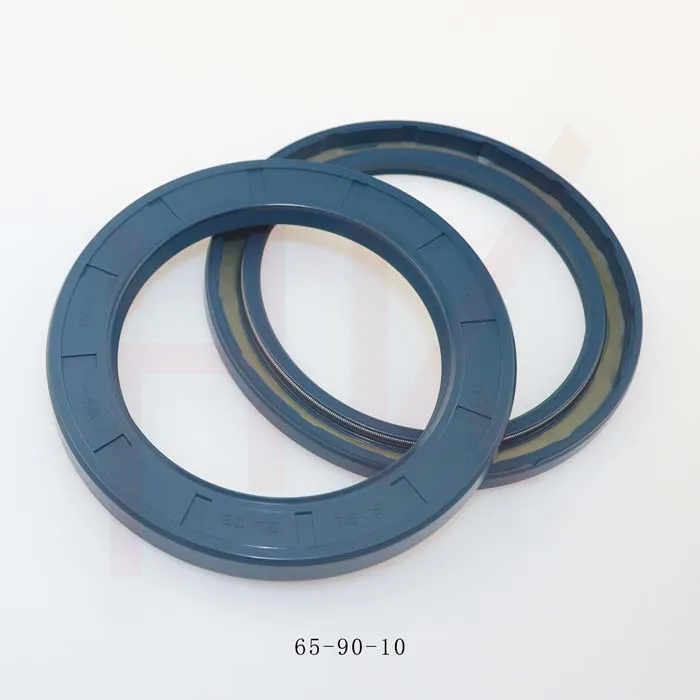Nov . 30, 2024 18:08 Back to list
Effective Dust Wiper Seals for Optimal Performance in Various Applications
Understanding Dust Wiper Seals Essential Components for Machinery Maintenance
In the realm of machinery and equipment operation, ensuring longevity and optimal performance is akin to nurturing the vital signs of a heartbeat. Among the unsung heroes of maintenance technology, dust wiper seals play an essential role in safeguarding machinery against the ever-present threat of contaminants. Understanding the significance of these seals, their construction, types, and maintenance can greatly contribute to the efficiency and durability of machinery.
What are Dust Wiper Seals?
Dust wiper seals are specially designed components that are typically installed on the exterior of hydraulic cylinders and other moving machinery parts. Their primary function is to prevent dust, dirt, and other contaminants from entering sensitive areas, such as the internal components of hydraulic systems. By keeping these critical components clean, dust wiper seals not only enhance performance but also mitigate the risk of wear and damage, ultimately extending the life of the equipment.
Construction of Dust Wiper Seals
Dust wiper seals are generally made from durable materials that are resistant to wear, abrasion, and environmental degradation. Commonly used materials include rubber, polyurethane, and thermoplastic elastomers. These materials are often chosen for their resilience and flexibility, allowing the seals to maintain a tight fit against the surface of the machinery.
The design of dust wiper seals typically features a lip or multiple lips that create a barrier against unwanted debris. The shape and structure can vary based on the application and design specifications of the machinery, with some seals incorporating additional support features to enhance their sealing capabilities and strength.
Types of Dust Wiper Seals
Dust wiper seals come in various designs tailored to specific applications
. Some widely recognized types include1. Single Lip Seals These basic seals feature one sealing lip and are used in many standard applications. They are cost-effective and efficient but may not provide the same level of protection as more complex designs.
2. Double Lip Seals These seals incorporate two lips, providing an enhanced barrier against contaminants. They are commonly used in environments where exposure to dirt and dust is significant.
dust wiper seal

3. U-Cup Seals U-Cup seals feature a U-shaped cross-section and are used for applications requiring higher sealing pressures. They excel in retaining lubricant while preventing the ingress of dirt and moisture.
4. V-Rings These are versatile seals that are effective in protecting against dust and dirt. V-Rings are often used in conjunction with other sealing elements for added protection.
Importance of Dust Wiper Seals in Maintenance
Regular maintenance of machinery is non-negotiable for optimal performance and prolonged lifespan. Dust wiper seals are pivotal in maintenance routines, as they prevent costly damage caused by contaminants. Failing to replace worn or damaged seals can lead to premature wear of hydraulic components, resulting in expensive repairs and downtime.
Moreover, the presence of effective dust wiper seals reduces the need for excessive lubrication, as they keep lubricants contained within the machinery while preventing leaks. This not only saves costs associated with oil and grease usage but also minimizes environmental impact.
Maintenance and Replacement of Dust Wiper Seals
Given their crucial role, regular inspection of dust wiper seals should form a part of any maintenance plan. Signs of wear, such as cracks, cuts, or a loss of flexibility, indicate the need for replacement. Depending on the working environment and application, seals may need replacement every several months or annually.
When replacing dust wiper seals, it is imperative to select the appropriate type and size as per the manufacturer's specifications. Proper installation is also critical; incorrect placement can lead to reduced performance or failure of the seal.
Conclusion
In conclusion, dust wiper seals are integral to the maintenance and efficiency of machinery across diverse industries. Their ability to protect against external contaminants significantly influences the operation and durability of hydraulic systems and other equipment. With regular inspection and appropriate maintenance practices, these seals can greatly enhance the performance and lifespan of machinery. Investing in quality dust wiper seals is not just about preventing contamination; it is about ensuring the health and efficiency of the entire system. Understanding and prioritizing these vital components will lead to smarter maintenance strategies and ultimately drive operational success.
-
TCN Oil Seal Metal Ring Reinforcement for Heavy Machinery
NewsJul.25,2025
-
Rotary Lip Seal Spring-Loaded Design for High-Speed Applications
NewsJul.25,2025
-
Hydraulic Cylinder Seals Polyurethane Material for High-Impact Jobs
NewsJul.25,2025
-
High Pressure Oil Seal Polyurethane Coating Wear Resistance
NewsJul.25,2025
-
Dust Proof Seal Double Lip Design for Construction Equipment
NewsJul.25,2025
-
Hub Seal Polyurethane Wear Resistance in Agricultural Vehicles
NewsJul.25,2025
-
The Trans-formative Journey of Wheel Hub Oil Seals
NewsJun.06,2025
Products categories
















